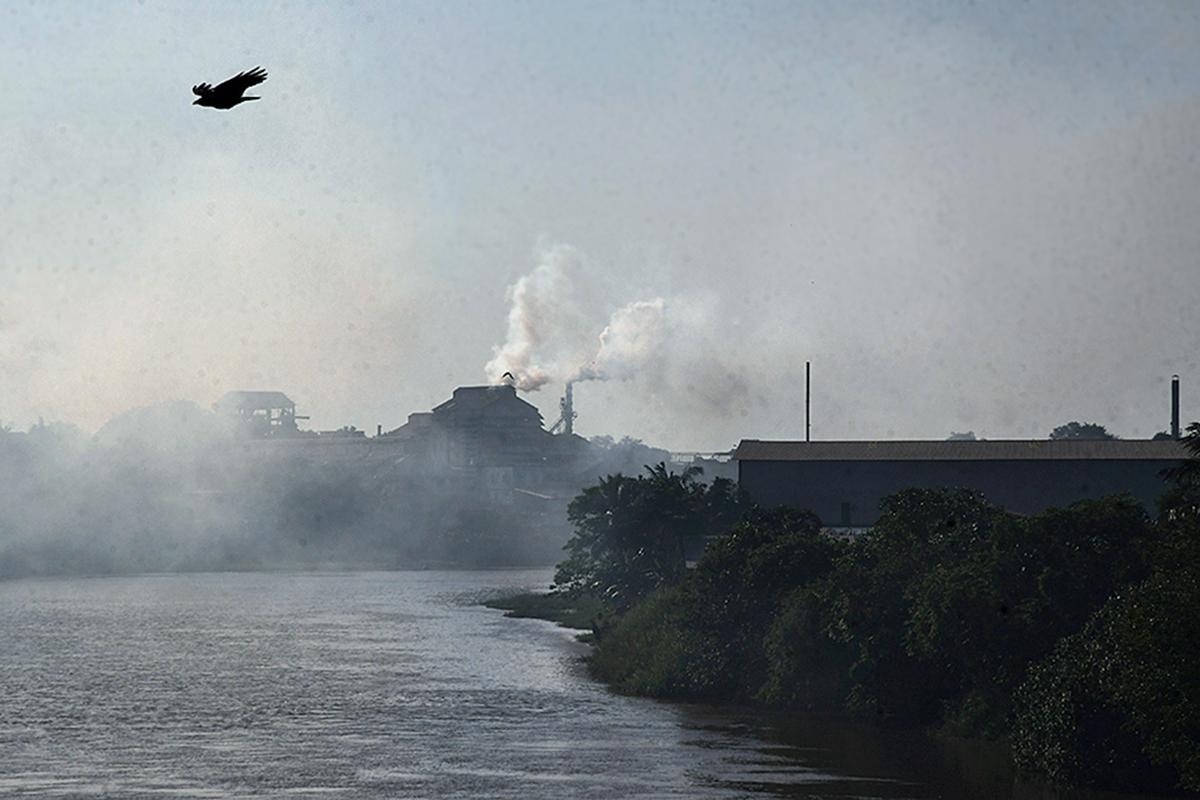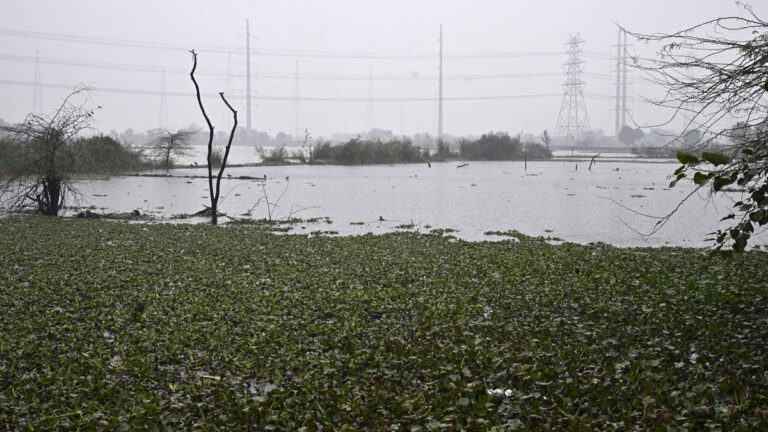
The total coliform count, indicating faecal contamination, recorded on the Irumpanam stretch of Chitrapuzha was 7,900 MPN per 100 ml in March, 2025.
| Photo Credit: THULASI KAKKAT
Faecal contamination exceeded the maximum permissible limits along the Kalamassery stretch of the Periyar and Irumpanam stretch of the Chitrapuzha in Ernakulam in March 2025.
The total coliform count, indicating faecal contamination, recorded on the Irumpanam stretch of Chitrapuzha was 7,900 MPN (most probable number) per 100 ml while the corresponding MPN in Kalamassery was 3,900/100 ml, according to an analysis by the Kerala State Pollution Control Board (KSPCB) carried out in March 2025. The maximum permissible limit of total coliform in bathing water, as prescribed by the Central Pollution Control Board (CPCB), is less than 2,500 MPN per 100 ml.
The analysis of water samples was done as part of the Central Pollution Control Board’s National Water Quality Monitoring Programme. Samples are collected from fixed locations on the Kalamassery stretch of the Periyar and the Irumpanam section along the Chitrapuzha every month as part of the monitoring programme.
The faecal coliform count along the Kalamassery stretch of the Periyar in March 2025 was 2,100 MPN per 100 ml. The faecal streptococci level had also exceeded the permissible limit on multiple occasions on the same stretch. It was recorded at 1,400 MPN per 100 ml against the maximum of 500 MPN per 100 ml prescribed by the CPCB. The situation along the Irumpanam stretch of the Chitrapuzha was no different. The faecal coliform count in March was 4,300 MPN/100 ml.

The faecal coliform count along the Kalamassery stretch of the Periyar in March 2025 was 2,100 MPN per 100 ml.
| Photo Credit:
THULASI KAKKAT
The water quality parameters at 13 monitoring stations along the Periyar in Idukki, Thrissur and Ernakulam districts had failed to comply with the norms of the CPCB’s National Water Quality Monitoring Programme in the period between January and December 2024.
The analysis had revealed that all 13 locations failed to meet the Primary Water Quality Criteria for Outdoor Bathing, as notified under the Environment (Protection) Rules, 1986. The parameters of non-compliance included Dissolved Oxygen (DO), pH, Biochemical Oxygen Demand (BOD), Faecal Coliform, and Faecal Streptococci, according to the Central Pollution Control Board (CPCB).
The range of faecal coliform values at Eloor and the sewage discharge point in Aluva had exceeded the primary water quality standards for outdoor bathing, surpassing the maximum permissible limit of 2,500 MPN (most probable number)/100 ml in the study period between January and December 2024.
Published – June 24, 2025 01:11 am IST



